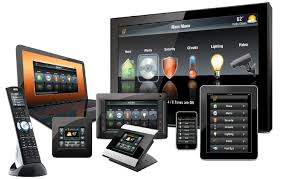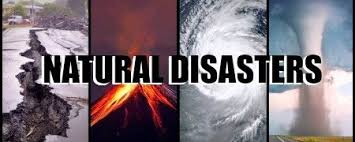
Outdoor Spaces: Porch, Patio, or Deck?
July 2, 2018
Home Technology of the Future (That You Can Get Now)
July 23, 2018A Natural disaster such as a hurricane, tornado, or earthquake can cause millions, and sometimes billions, of dollars worth of property damage each year. Frequently displacing families from their homes and neighborhoods. In these situations, being prepared can make a big difference to your family’s safety. Many emergency management agencies recommend assembling a preparedness kit to aide your family in these situations.
An emergency preparedness kit is simply a collection of items your family will need in the event of an emergency. Should you need to evacuate or move to a new location quickly, you will not want to have to search for them or purchase them at that time.
Depending on the severity of the situation, it may take some time for first responders to reach you. Basic services such as electricity, gas, water, and telephones may be cut off for days or even longer. Your kit should contain items to help you manage during these outages.
The top ten items to have in your emergency preparedness kit are:
Food & Water: Food and water are essential for survival and should be a priority for your preparedness kit. Again, keep at least a 3-day supply of non-perishable, easy-to-prepare items. Dry boxed foods like cereals and canned goods are best. Also, keep at least one gallon of water per person per day for a 3-day minimum. This may sound excessive but in the event of utility outages, your clean water will need to be used for personal hygiene and cleaning purposes in addition to drinking.
Medications: Medications and medical supplies are another critical item that should be considered. Be sure to have on hand at least a 3-5 day supply of medicines and supplies. It may even be a good idea to keep your refill prescription in your kit. Remember, it may not be easy to get to pharmacies and doctors or they may be closed due to outages so plan ahead to reduce the potential for medical issues.
First aid kit: Every emergency preparedness kit should have a least basic first aid items such as band aids, gauze, sterilizing wipes, antibiotic ointment, and waterproof medical tape. However, you may want to add other items based on your family’s needs. Things like children’s Tylenol, eye wash, and ice packs may be very helpful to you as well.
Flashlights: Typically, during a severe storm, one of the first services to go is the electric. Power outages are not uncommon after pretty much any type of natural disaster and navigating in the dark can be dangerous and a bit scary. Keep 1-2 flashlights per family member in your kit and don’t forget the extra batteries.
Battery-powered or hand-crank radio: It is really important that you have access to local weather reports and alerts. Knowing what to expect and how to respond could be the difference between life and death. Be sure to keep cell phones and computers fully charged. But you should also have on hand a battery powered or crank style radio in the event of a power outage.
Blankets: Even during warmer months and in warmer climates, blankets can be useful. In colder climates, blankets will be a necessity should you have no other heat source. The number of blankets you add to your kit will depend on your region’s climate and the number of people in your family. Generally, 1-2 blankets per person is sufficient.
Multi-purpose tool: A multi-purpose tool such as a Swiss army knife can be invaluable considering that it has so many different uses. Use it as a knife, can opener, tweezers, file, etc.
Family and emergency contact information: While most of us have of all our important information stored on our smartphones, there may be a time when we cannot retrieve that information. Therefore, it’s a great idea to write a list of important contact information and add it to your kit. If possible, laminate your list to protect is from moisture. That way if you can’t get to your phone or it won’t turn on, you still have the information you need at hand.
Sanitation and personal hygiene items: Sanitation and personal hygiene items are usually very difficult to come by during times of natural disaster. Be sure to pack a supply of things like toilet paper, toothbrushes, toothpaste, and feminine hygiene products.
Children’s Comfort Items: Last but not least consider adding a few of your child’s favorite items to your kit. Children will appreciate the distraction during what will most likely be a stressful and frightening time for them. Board games, cards, activity books and other items that do not require electricity to operate are generally a good idea. In addition, add your child’s favorite toy or blanket. Although these items cannot generally be packed ahead of time, be sure that they are nearby when bad weather is in the forecast.
Being as prepared as possible and following the direction of local authorities are the two best ways to help keep your family safe. Possessions can always be replaced but our loved ones cannot.




